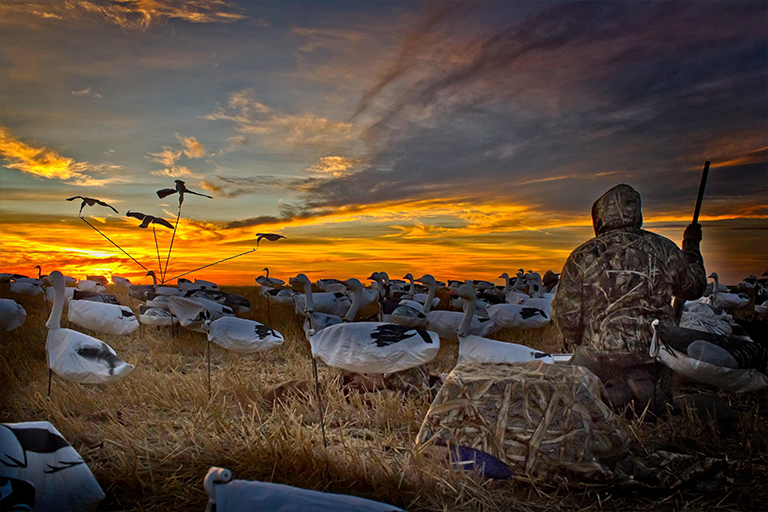By Dennis Smith
However stunning they may be, it has always seemed to me that sunsets, probably because they signal the end of another day, carry with them a sense of sadness and finality. After all, the day is done. Over. Kaput. A sunset is to the day what a period is to the end of a sentence.
But a sunrise marks the beginning of a new day aglow with promise, mystery and intrigue. Plus, it means I lived through the night — a feeling I can’t help but find refreshing in the morning. Now, every sunrise is cause for celebration, but among my favorites are those spent hunkered down on an eastern Colorado grain field bristling with a thousand snow goose decoys snapping in the wind, my kids and a couple of retrievers shiver-dancing with excitement.
Our snow goose sunrises usually begin in mid-February. The predawn sky is usually a black, star-riddled curtain in the east; the air is chill, damp and heavy with an oddly-intoxicating perfume of golden wheat stubble, clammy-black earth and Hoppe’s No. 9 gun oil. The annual spring migration of mid-continent lesser snow geese has been following the receding snow line north from wintering grounds on the Texas gulf coast, arriving in daily waves numbering in the tens of thousands along the South Platte River bottoms, feeding in the great, sweeping grain fields of central Nebraska and eastern Colorado.
But there are literally more of them than the land can sustain, and they are eating themselves out of house and home. Surveys show the breeding population of mid-continent light geese exceeds 5 million birds, and they continue to increase at a rate greater than 5 percent per year. Their massive numbers present a problem not only for themselves, but also for other wildlife and plants that share their habitats. The fragile tundra where light geese traditionally nest is being seriously degraded or destroyed, and they’re causing extensive damage to crops in farm fields on their wintering grounds.
They need to be controlled, but light geese aren’t effectively controlled by natural predators. While some are taken by coyotes and foxes on their migration and wintering grounds, the numbers are insignificant. In 1980, the U.S. Fish and Wildlife Service increased the length of the migratory bird hunting season to 107 days — the maximum allowed by the Migratory Bird Treaty Act. Daily bag limits on snows were increased to levels beyond those allowed for any other waterfowl species, possession limits have been completely removed and the use of electronic calls allowed. The season offers hunters a unique opportunity to participate in the management of these marvelous creatures during one of the most dramatic wildlife migrations on the continent.
We’ve been in the field since 3 a.m. planting decoys, the trucks are hidden a half mile away and the dogs are settled in their camouflaged kennels. Night has drained from the land and the sky is a kaleidoscope of swirling colors impossible to describe. We hear the telltale squawking of geese in the distance. It’s a snow goose sunrise and the beginning of a new day.
Dennis Smith is a freelance outdoors writer and photographer whose work appears nationally. He lives in Loveland.

